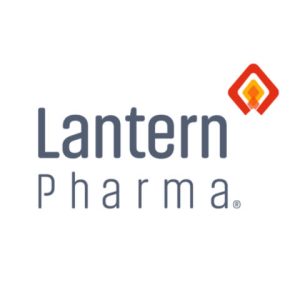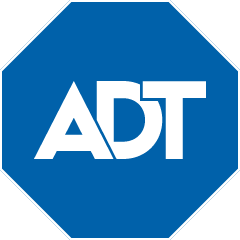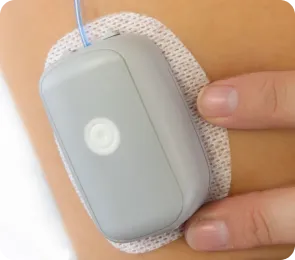Fed Flirts with Rate Cuts, Stocks Swoon with Joy (July 31) – $ADT $BA $EPRX $NVDA Rise!

Fed’s Rate Cut Hints
Fed Chair Jerome Powell, master of monetary mixology, served up a cocktail of economic optimism with a twist of dovish rhetoric. In his post-meeting press conference, Powell hinted that rate cuts could be “on the table as soon as September,” sending traders into a frenzy faster than you can say “quantitative easing”. Today, the FOMC left the target range for the fed funds rate at 5.25-5.50%. The 10-yr note yield also dropped 3bps to 4.11% & the 2-yr note yield fell 3bps to 4.34%.
S&P 500 and Nasdaq Surge
Market Reaction and Tech Sector Performance
The stock market’s reaction to the Fed’s hints was nothing short of euphoric. The S&P 500 jumped higher than a cat spotting a cucumber, posting its best day in five months. Meanwhile, the tech-heavy Nasdaq decided to channel its inner Usain Bolt, sprinting up over 3% and leaving slower sectors in its digital dust. It was as if the entire market had collectively chugged a triple espresso, with stocks bouncing around like caffeinated kangaroos.
Big Tech stocks, apparently feeling left out of the recent AI party, decided to crash it in style. Nvidia surged to $117.02, up a whopping 12.8%, as if investors suddenly remembered that AI needs actual hardware to run on, not just buzzwords and hype. The chip giant’s stock got a boost after Morgan Stanley re-added it to their “cool kids” list, also known as their top pick. It seems investors suddenly remembered that AI needs more than just buzzwords – it actually requires those pesky little things called chips.
Other tech giants joined the festivities. Advanced Micro Devices (AMD) jumped over 2% after flexing its muscles with better-than-expected revenue guidance. Meanwhile, Qualcomm and Arm were preparing to reveal their quarterly report cards after hours, no doubt hoping to join the tech sector’s impromptu conga line.
Even Microsoft, which had earlier stubbed its toe on cloud revenue and increased AI spending, managed to shake it off like a tech titan dropping pocket change. The stock slipped a mere 1%, barely a blip in its otherwise stellar performance.
In other corporate news, Boeing (BA, $190.60, +2%) appointed a new CEO, presumably hoping for someone who can make their planes as steady as their stock prices aren’t.
The small caps on the Russell 2000 closed at 2,254.48 (+.51%) & The iShares Micro-Cap ETF (IWC) closed at $128.17, +.73%.
As the closing bell rang, traders could be seen doing victory laps around their terminals, their eyes gleaming with visions of bull markets and bearish fears temporarily banished. It was a day when the stock market decided to party like it’s 1999 – or at least like it’s pre-2022 when interest rates were still on speaking terms with zero.
Economic Data Highlights
The economic data released on July 31, 2024, painted a picture as mixed as a Jackson Pollock painting, leaving economists scratching their heads and traders reaching for their crystal balls. The Weekly MBA Mortgage Applications Index took a nosedive, dropping 3.9% faster than a skydiver without a parachute, compared to the previous week’s more modest 2.2% descent. It seems potential homebuyers are treating mortgages like hot potatoes, eager to drop them at the slightest increase in rates.
Meanwhile, the July ADP Employment Change report showed a gain of 122,000 jobs, falling short of the 160,000 expected by analysts who apparently forgot to carry the one in their calculations. This underwhelming performance in job creation had economists wondering if the labor market was taking an unscheduled summer vacation.
The Q2 Employment Cost Index came in at 0.9%, slightly below expectations and down from the previous quarter’s 1.2%. This moderation in wages and benefits had the Fed perking up its ears like a dog hearing a distant squirrel, potentially setting the stage for a rate cut sooner than expected.
In a plot twist worthy of a soap opera, June Pending Home Sales surged 4.8%, dramatically outperforming the expected 1.5% increase. It seems the housing market decided to throw a surprise party, leaving economists scrambling to revise their forecasts and real estate agents doing celebratory cartwheels.
Finally, the July Chicago PMI came in at a less-than-stellar 45.3, down from the previous 47.4. This continued contraction in the Windy City’s business activity had analysts wondering if Chicago’s famous deep-dish pizza economy was getting a bit too deep for comfort.
As Wall Street digested this smorgasbord of economic indicators, traders were left feeling like they’d just finished an all-you-can-eat buffet of conflicting data. The only certainty? That uncertainty remains the only constant in this economic circus.
VP Watchlist Updates

Eupraxia Pharmaceuticals (EPRX, $2.84, +3.27% today), is a clinical-stage biotechnology company focused on the development of locally delivered, extended-release products that have the potential to address therapeutic areas with high unmet medical need. The Company strives to provide improved patient benefit and has developed technology designed to deliver targeted, long-lasting activity with fewer side effects. DiffuSphere™, a proprietary, polymer-based micro-sphere technology, is designed to facilitate targeted drug delivery, with extended duration of effect, and offers multiple, highly tuneable pharmacokinetic (PK) profiles. This investigational technology can be engineered for use with multiple active pharmaceutical ingredients and delivery methods.Note that Eupraxia recently completed a Phase 2b clinical trial (SPRINGBOARD) of EP-104IAR for the treatment of pain due to osteoarthritis of the knee. The trial met its primary endpoint and three of the four secondary endpoints. Eupraxia has expanded the EP-104 platform into gastrointestinal disease with the Phase 1b/2a RESOLVE trial for treating EoE. Eupraxia is also developing a pipeline of later- and earlier-stage long-acting formulations. Potential pipeline indications include candidates for other inflammatory joint indications and oncology, each designed to improve on the activity and tolerability of currently approved drugs.On June 5, Eupraxia announced that results from its Phase 2 study of EP-104IAR for the treatment of osteoarthritis of the knee will be presented at the upcoming European Alliance of Associations for Rheumatology (“EULAR”) European Congress of Rheumatology 2024 (the “Meeting”). The EULAR Meeting is being held in Vienna, Austria from June 12-15, 2024.On May 23, Eupraxia announced that regulators in Australia and Canada have cleared the Company’s request to expand its Phase 1b/2a RESOLVE trial, which is evaluating the safety and efficacy of EP-104GI as a treatment for eosinophilic esophagitis (“EoE”). For further details about Eupraxia, please visit the Company’s website at: www.eupraxiapharma.com.
 Shares of Lantern (LTRN), an artificial intelligence (“AI”) company developing targeted and transformative cancer therapies using its proprietary RADR® AI and machine learning (“ML”) platform with multiple clinical stage drug program, closed at $4.20, -5.62%. On July 10, Lantern announced a significant advancement towards the development of a diagnostic for its drug candidate LP-184. The diagnostic is currently based on qRT-PCR (quantitative real-time polymerase chain reaction) technology and is focused on quantifying the amount of PTGR1 RNA in patient tumor samples to assess the potential for sensitivity to Lantern’s drug candidate LP-184. The company plans to further develop and validate the assay for its use as a potential tool for patient selection in later stage clinical trials across a broad range of solid tumors that have shown sensitivity to LP-184. Panna Sharma, CEO of Lantern Pharma stated, “This milestone represents a significant leap forward in our precision oncology approach and in ensuring that we enrich our future LP-184 clinical trials with the patients we believe will be most likely to benefit. By working to develop a companion diagnostic for LP-184, we’re not just advancing a drug candidate; we’re paving the way for more personalized and effective cancer treatments for patients that have the highest likelihood of benefitting from the therapy. The planned use of biomarkers like PTGR1 in our clinical trials exemplifies our commitment to data-driven, patient-centric drug development.”Panna Sharma, CEO of Lantern, was interviewed recently on the ‘Today In Nashville’, a program hosted by Carole Sullivan and associated with Nashville’s WSMV 4, an NBC affiliate. Watch it here to learn more.On June 12, Lantern announced that the Japan Patent Office (JPO) has issued a Certificate of Patent for patent application no. 2021-513267 / registration no. 7489966 directed to Lantern Pharma’s drug candidate LP-284 ((+)N-hydroxy-N-(methylacylfulvene)urea). The Certificate of Patent entitled “Illudin Analogs, Uses Thereof, and Methods for Synthesizing the Same” covers molecule LP-284, including claims covering the new molecular entity. A Certificate of Patent is issued after JPO examinations have confirmed the merits of a patent request. Lantern values the broad protection this latest patent provides. Lantern estimates that LP-284 can have the potential to improve outcomes for 40,000 to 80,000 patients with blood cancers annually, with a global annual market potential of $4 Billion USD.
Shares of Lantern (LTRN), an artificial intelligence (“AI”) company developing targeted and transformative cancer therapies using its proprietary RADR® AI and machine learning (“ML”) platform with multiple clinical stage drug program, closed at $4.20, -5.62%. On July 10, Lantern announced a significant advancement towards the development of a diagnostic for its drug candidate LP-184. The diagnostic is currently based on qRT-PCR (quantitative real-time polymerase chain reaction) technology and is focused on quantifying the amount of PTGR1 RNA in patient tumor samples to assess the potential for sensitivity to Lantern’s drug candidate LP-184. The company plans to further develop and validate the assay for its use as a potential tool for patient selection in later stage clinical trials across a broad range of solid tumors that have shown sensitivity to LP-184. Panna Sharma, CEO of Lantern Pharma stated, “This milestone represents a significant leap forward in our precision oncology approach and in ensuring that we enrich our future LP-184 clinical trials with the patients we believe will be most likely to benefit. By working to develop a companion diagnostic for LP-184, we’re not just advancing a drug candidate; we’re paving the way for more personalized and effective cancer treatments for patients that have the highest likelihood of benefitting from the therapy. The planned use of biomarkers like PTGR1 in our clinical trials exemplifies our commitment to data-driven, patient-centric drug development.”Panna Sharma, CEO of Lantern, was interviewed recently on the ‘Today In Nashville’, a program hosted by Carole Sullivan and associated with Nashville’s WSMV 4, an NBC affiliate. Watch it here to learn more.On June 12, Lantern announced that the Japan Patent Office (JPO) has issued a Certificate of Patent for patent application no. 2021-513267 / registration no. 7489966 directed to Lantern Pharma’s drug candidate LP-284 ((+)N-hydroxy-N-(methylacylfulvene)urea). The Certificate of Patent entitled “Illudin Analogs, Uses Thereof, and Methods for Synthesizing the Same” covers molecule LP-284, including claims covering the new molecular entity. A Certificate of Patent is issued after JPO examinations have confirmed the merits of a patent request. Lantern values the broad protection this latest patent provides. Lantern estimates that LP-284 can have the potential to improve outcomes for 40,000 to 80,000 patients with blood cancers annually, with a global annual market potential of $4 Billion USD.
 Shares of Indaptus Therapeutics, Inc. (Nasdaq: INDP) closed at $2.03, -.51%. Indaptus is a company with the ability to harness both the body’s innate and adaptive immune responses, believes that they are uniquely positioned to revolutionize the treatment of cancer and certain infectious diseases. Indaptus Therapeutics has evolved from more than a century of immunotherapy advances. The Company’s novel approach is based on the hypothesis that efficient activation of both innate and adaptive immune cells and pathways and associated anti-tumor and anti-viral immune responses will require a multi-targeted package of immune system-activating signals that can be administered safely intravenously (i.v.). Indaptus’ patented technology is composed of single strains of attenuated and killed, non-pathogenic, Gram-negative bacteria producing a multiple Toll-like receptor (TLR), Nucleotide oligomerization domain (Nod)-like receptor (NLR) and Stimulator of interferon genes (STING) agonist Decoy platform. The products are designed to have reduced i.v. toxicity, but largely uncompromised ability to prime or activate many of the cells and pathways of innate and adaptive immunity. Decoy products represent an antigen-agnostic technology that have produced single-agent activity against metastatic pancreatic and orthotopic colorectal carcinomas, single agent eradication of established antigen-expressing breast carcinoma, as well as combination-mediated eradication of established hepatocellular carcinomas and non-Hodgkin’s lymphomas in standard pre-clinical models, including syngeneic mouse tumors and human tumor xenografts.On June 4, Indaptus announced that its Chief Medical Officer, Roger Waltzman, M.D., will present an update on the Company’s lead product candidate, Decoy20, at the 7th Annual Next-Gen Immuno-Oncology Conference in Boston on June 20-21, 2024. Dr. Waltzman will present preliminary results from the Company’s ongoing Phase 1 study of Decoy20, an intravenous treatment using killed bacteria designed to broadly stimulate the immune system, in patients with advanced solid tumors.On June 3, Indaptus announced updated data from its ongoing Phase 1 clinical trial of Decoy20 in patients with solid tumors. The data were featured in a poster presentation at the American Society of Clinical Oncology (ASCO) Annual Meeting on June 1 in Chicago, Illinois.
Shares of Indaptus Therapeutics, Inc. (Nasdaq: INDP) closed at $2.03, -.51%. Indaptus is a company with the ability to harness both the body’s innate and adaptive immune responses, believes that they are uniquely positioned to revolutionize the treatment of cancer and certain infectious diseases. Indaptus Therapeutics has evolved from more than a century of immunotherapy advances. The Company’s novel approach is based on the hypothesis that efficient activation of both innate and adaptive immune cells and pathways and associated anti-tumor and anti-viral immune responses will require a multi-targeted package of immune system-activating signals that can be administered safely intravenously (i.v.). Indaptus’ patented technology is composed of single strains of attenuated and killed, non-pathogenic, Gram-negative bacteria producing a multiple Toll-like receptor (TLR), Nucleotide oligomerization domain (Nod)-like receptor (NLR) and Stimulator of interferon genes (STING) agonist Decoy platform. The products are designed to have reduced i.v. toxicity, but largely uncompromised ability to prime or activate many of the cells and pathways of innate and adaptive immunity. Decoy products represent an antigen-agnostic technology that have produced single-agent activity against metastatic pancreatic and orthotopic colorectal carcinomas, single agent eradication of established antigen-expressing breast carcinoma, as well as combination-mediated eradication of established hepatocellular carcinomas and non-Hodgkin’s lymphomas in standard pre-clinical models, including syngeneic mouse tumors and human tumor xenografts.On June 4, Indaptus announced that its Chief Medical Officer, Roger Waltzman, M.D., will present an update on the Company’s lead product candidate, Decoy20, at the 7th Annual Next-Gen Immuno-Oncology Conference in Boston on June 20-21, 2024. Dr. Waltzman will present preliminary results from the Company’s ongoing Phase 1 study of Decoy20, an intravenous treatment using killed bacteria designed to broadly stimulate the immune system, in patients with advanced solid tumors.On June 3, Indaptus announced updated data from its ongoing Phase 1 clinical trial of Decoy20 in patients with solid tumors. The data were featured in a poster presentation at the American Society of Clinical Oncology (ASCO) Annual Meeting on June 1 in Chicago, Illinois.

Shares of ADT Inc. (ADT), a leading provider of monitored security and automation solutions for residential and small business customers in the United States and Canada, closed at $7.78, +.65 after establishing a new 52-wk high of $7.92 during intraday trading recently. ADT is due to report quarterly results on Thursday, Aug. 1. On June 17, ADT announced the appointment of Dan Houston and Danielle Tiedt to the Company’s Board of Directors as additional independent directors. In conjunction with their appointments, Houston and Tiedt will both join the Board’s Nominating and Corporate Governance Committee, while Houston will also join the Board’s Compensation Committee. Houston is chairman, president and chief executive officer of Principal Financial Group, a global financial services company with $709 billion of assets under management. He joined Principal in 1984 and has served as chief executive officer since 2015. Houston serves on several boards of non-profit organizations, including the American Council of Life Insurers, Iowa State University Business School Dean’s Advisory Council and Partnership for a Healthier America. As chief marketing officer for Google’s YouTube, Tiedt oversees global marketing strategy, product marketing and brand vision. During her tenure, YouTube has grown to a $40 billion business operating in 76 countries. Prior to joining Google in 2012, Tiedt held various leadership roles in technology product management and marketing at Microsoft. She serves on the board of the 4-H Foundation, America’s largest youth development organization.

Modular Medical, Inc. (NASDAQ: MODD, $1.57, -5.42%), is a development-stage, insulin delivery technology company seeking to launch the next generation of user-friendly and affordable insulin pump technology. Using its patented technologies, the company seeks to eliminate the tradeoff between complexity and efficacy, thereby making top quality insulin delivery both affordable and simple to learn. Their mission is to improve access to the highest standard of glycemic control for people with diabetes taking it beyond “superusers” and providing “diabetes care for the rest of us.” Modular Medical was founded by Paul DiPerna, a seasoned medical device professional and microfluidics engineer. Prior to founding Modular Medical, Mr. DiPerna was the founder (in 2005) of Tandem Diabetes and invented and designed its t:slim insulin pump. More information is available at https://modular-medical.com.

Quote of the Day
Economic Reports
On Tuesday, the May FHFA Housing Price Index hit a perfect 0.0%, proving that sometimes, doing absolutely nothing is an achievement in itself. Meanwhile, the S&P Case-Shiller Home Price Index came in at 6.8%, matching expectations with the precision of a synchronized swimming team. Consumer Confidence surprised everyone by jumping to 100.3, suggesting that Americans are feeling as optimistic as someone who just found a $20 bill in their old jeans. The JOLTS report revealed 8.184 million job openings, slightly down from the previous month, indicating that the job market is playing hard to get.
On Wednesday, the Weekly MBA Mortgage Applications Index took a nosedive, dropping 3.9% faster than a skydiver without a parachute, compared to the previous week’s more modest 2.2% descent.It seems potential homebuyers are treating mortgages like hot potatoes, eager to drop them at the slightest increase in rates.
Meanwhile, the July ADP Employment Change report showed a gain of 122,000 jobs, falling short of the 160,000 expected by analysts who apparently forgot to carry the one in their calculations. This underwhelming performance in job creation had economists wondering if the labor market was taking an unscheduled summer vacation.
The Q2 Employment Cost Index came in at 0.9%, slightly below expectations and down from the previous quarter’s 1.2%. This moderation in wages and benefits had the Fed perking up its ears like a dog hearing a distant squirrel, potentially setting the stage for a rate cut sooner than expected.
In a plot twist worthy of a soap opera, June Pending Home Sales surged 4.8%, dramatically outperforming the expected 1.5% increase. It seems the housing market decided to throw a surprise party, leaving economists scrambling to revise their forecasts and real estate agents doing celebratory cartwheels.
Finally, the July Chicago PMI came in at a less-than-stellar 45.3, down from the previous 47.4. This continued contraction in the Windy City’s business activity had analysts wondering if Chicago’s famous deep-dish pizza economy was getting a bit too deep for comfort.
Videos
Post View Count : 501














